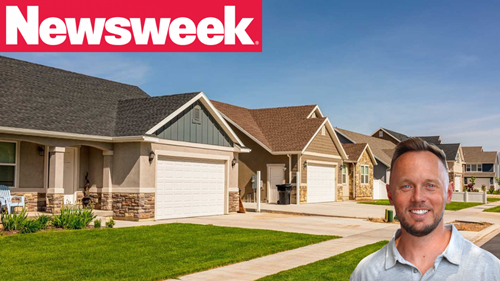March 4th, 2024
Homeowners Encouraged to Build Apartments on Their Property

A city in New Jersey is considering a proposal to allow homeowners to add small units on their lots, part of a move to help increase the supply of homes available for residents at a time when communities across the country are facing housing shortages.
Passaic—population close to 70,000—isn't the only one contemplating that move. New Jersey Governor Phil Murphy said last week in his state budget address that he supports "the construction of new Accessory Dwelling Units, which will enable homeowners to convert their garage or attic into an apartment, in which a loved one, or even a local renter, can move into."
The construction of these properties—which have been embraced in some fashion in certain parts of the country—can help tackle the issue of low supply of homes, experts say. America's single-family homes are more than 7 million short of where they need to be to meet growing demand despite recent upticks in construction.
Industry veterans say that accessory dwelling units—also colloquially called "in-law suites" or "granny suites"—can help plug the gap.
"We are going to need a holistic approach, right, all hands on deck, to build housing inventory," Colton Paulhus, CEO and Co-Founder of Anchored Tiny Homes, told Newsweek. "When it comes down to it, we're going to need single-family homes, we're going to need apartments. But I think a major, major, solution is accessory dwelling units."
Paulhus said that part of the attraction with these properties is builders do not need new land—a key challenge in new home construction—to develop them which potentially could make them less costly.
"You can literally just double the housing inventory in theory without any new land," he said. "So I think it gives the ability to provide housing at an affordable cost because they are smaller units."
The average size of the units can range from 200 square feet studios to 1,200 square feet apartments, Paulhus added, with most people building 500 to 700 square feet of one to two bedrooms. The cost tends to be estimated at $120,000 up to $220,000, according to Paulhus.
Most of these units will help in the rental market, which became expensive over the course of the COVID crisis. While recent data shows that costs to rent are cooling, more than 20 million American households who are renters still spend more than 30 percent of their income on housing costs, according to a study at Harvard University.
Accessory dwelling units can help ease the pressure of rental costs for Americans, experts say.
"They kind of create rental supply more so than a smaller home that would be available for a separate purchase," Danielle Hale, chief economist at realtor.com, told Newsweek. "We need both types of housing—for sale and rental housing."
These homes can offer cheaper housing options for Americans, said Jamison Manwaring co-founder and CEO of Neighborhood Ventures, especially when the cost of living has been elevated with shelter costs a key reason why.
Manwaring, who is based in Phoenix, Arizona, said the city recently passed an ordinance to allow homeowners to build accessory dwelling units on their lots.
"We've had an extreme shortage of especially affordable housing available for folks," Manwaring told Newsweek. "This is a big win for everybody because most of these ADUs are going to be affordable housing."
While demand is increasing for building accessory dwelling units, regulations allowing for their construction are not as widespread across the country which limits their growth, Manwaring said. He blamed movements such as NIMBYISM—a phrase that stands for Not In My Backyard"—where some communities decry such constructions to be developed in their neighborhoods, as stifling their expansion.
Local city regulations have also been a limiting factor, Paulhus said. Securing financing for homeowners to invest in the construction can be a challenge too, he added.
But Manwaring said that homeowners have seen the value of their homes soar over the last two years. The gained equity can help finance the construction of their new units, he said.
"They can tap into that equity with a home equity line of credit, that there are many of those options available now. They can refinance the house and pull out some cash to do this," he pointed out.
Homeowners can create a new source of income as a result, he added, when they rent out those units.
Demand for such homes was growing, Paulhus said, which could push more parts of the country to approve their construction.
"I think over time, there's such a strong demand from consumers, that cities and counties are going to have to approve it," he told Newsweek. "I don't know how long that's going to take. It's happening, really, weekly, monthly, and yearly, where new cities and counties are getting approved."

